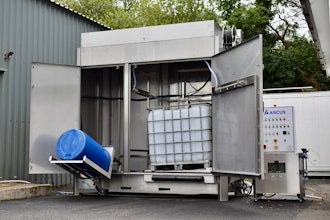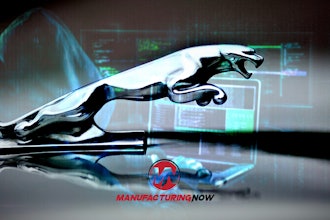
Driven by consumer demand and transformative technologies, the fourth industrial revolution (4IR) is challenging manufacturers to embrace new business models. The combination of big data, AI/ML, and IoT has fundamentally changed how manufacturers develop, design, distribute and service products. Despite strained budgets and resources, manufacturing CIOs are leading the charge.
To plot a Business-Driven Roadmap for what’s next, let’s review the impact 2020 has had on manufacturing CIOs. Primary challenges include:
- Global uncertainty. Pandemic-induced quarantines, social distancing, and economic slowdowns have caused drastic downturns for some, and dramatic upturns for others. Many factories had to stay open as essential businesses. They paved the way for new work environments, new rules, and new regulations to produce the goods the world needed during lock down. Manufacturing CIOs are now tasked with juggling growth – and supporting remote workers, adapting to new consumer behaviors, and upskilling for new technologies. To become tomorrow’s superheroes, CIOs need to balance crisis response with planning for what’s next.
- IT/application complexity. Though an issue before the pandemic, the ever-evolving complexity of IT environments shows no signs of slowing down. In fact, it’s getting worse. Hasty decisions and quick fixes are creating a zoo of disparate technology that will need care and feeding in the future. Many manufacturers are tied to highly customized, legacy core systems. These systems are often the backbone of manufacturing organizations responsible for supply chain management, HR/payroll, and customer experience. But, between licensing, maintenance, and manhours, they come with high operating costs. In the Manufacturing Leadership Council’s 2020 Transformative Technologies in Manufacturing survey, 47 percent of manufacturing leaders identified migration from or integrating with legacy systems as one of their biggest innovation challenges. Attempting to take advantage of more efficient, agile IT delivery methods, like cloud, serverless, and containers, requires disruptive, expensive IT transformations that leaders don’t have the time, expertise, or budget to complete. Yet, without funding and resources for transformation projects, organizations can’t harness a competitive edge.
- Leveraging transformative technologies. Industry 4.0 is here. It’s being driven by data and smart devices. Nearly 60 percent of manufacturing organizations are scaling AI specifically to prevent failures, defects, and safety events. 3-D printing, which isn’t new, is now being used in new ways powered by AI/ML. These technologies are being leveraged to automate many processes that require expensive labor – and that’s just the tip of the iceberg. The potential for increasing revenue, improving quality, and making data-based decisions is ripe across the manufacturing landscape.
And the industry is listening. Over half of surveyed manufacturing executives are prioritizing data science and analytics for 2021 and most agree that data-driven digital business models are a requirement for long-term survival. Nearly one-third of production processes now incorporate smart devices, IoT, and embedded intelligence.
Leveraging these new technologies can help manufacturers get to market quicker, produce higher quality products faster, and differentiate in the market. During this crisis, funds and resources for transformation are more difficult to find. Yet, organizations are still finding new ways to solve safety, compliance, and reporting issues with technology.
2021 Strategies for CIO Superheroes
With these challenges on the table, manufacturing CIOs need to focus on adjusting budgets to account for uncertainty while finding resources to reinvest in innovation. Turning the corner in 2021 means making tough decisions around IT priorities. The three strategies below will help CIOs free funds and resources to reinvest in initiatives that drive growth and foster innovation.
- Strategy 1: Maintain Stability
Eliminate or delay application updates and upgrades that deliver little or no value. If it isn’t broken, don’t fix it. Despite the pressure, resist vendors suggesting “change for change sake”. During a crisis, some vendors might try to sell you the cure for crisis response that could leave you locked into technology that hampers future growth – financially and technologically. Focus on increasing ROIC (Return on Invested Capital) and minimizing disruption.
- Strategy 2: Protect the Budget
Audit spending to determine where you are gaining value or sinking resources. For example, many ERP licensees spend the largest portion of their budget on licensing, maintenance, and support, but aren’t getting much perceived value in the way of responsive support and value-added enhancements. At times like these, it’s important to look at what value your vendor is delivering and explore alternatives to get more value out of your dollars.
Shadow IT, common in manufacturing, also needs to be unearthed and addressed. More business units are going around IT backlogs to adopt SaaS applications in the wake of COVID-19. The use of unmanaged technology not only represents a potential threat to the budget, but also a potential threat to security and performance. Maintain stability in your core systems and leverage hybrid models to infuse cloud efficiencies without undertaking a complete rip and replace to help protect assets and preserve cash.
- Strategy 3: Feed Innovation
COVID didn’t significantly slow the digital economy. For many organizations, the crisis sped it up by creating a critical need for technology-enabled processes to support new needs. Companies are revamping business models to adapt to new consumer expectations and market disruptions. To help these new business models succeed, IT must find ways to quickly build resiliency and enable agility. Meanwhile, CIOs are under pressure to find creative ways to cut waste and re-invest where dollars drive tangible results. To trim existing costs to help create funds and make time for innovation, consider independent, third-party support to reduce ERP support responsibilities and related costs.
To survive today and thrive tomorrow, manufacturing CIOs need to maintain stability where they can tactically gain efficiencies. Instead of sweeping transformation projects, seek quick wins that help the organization pursue innovation without disrupting critical operations. By shifting budget priorities, CIOs can become superheroes by funding what’s essential, optimizing spend, and using the savings to fund the future.
Renee Wells is the Vice President of Strategy at Rimini Street.






















